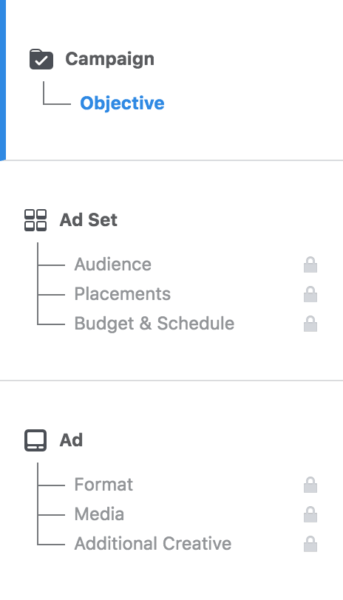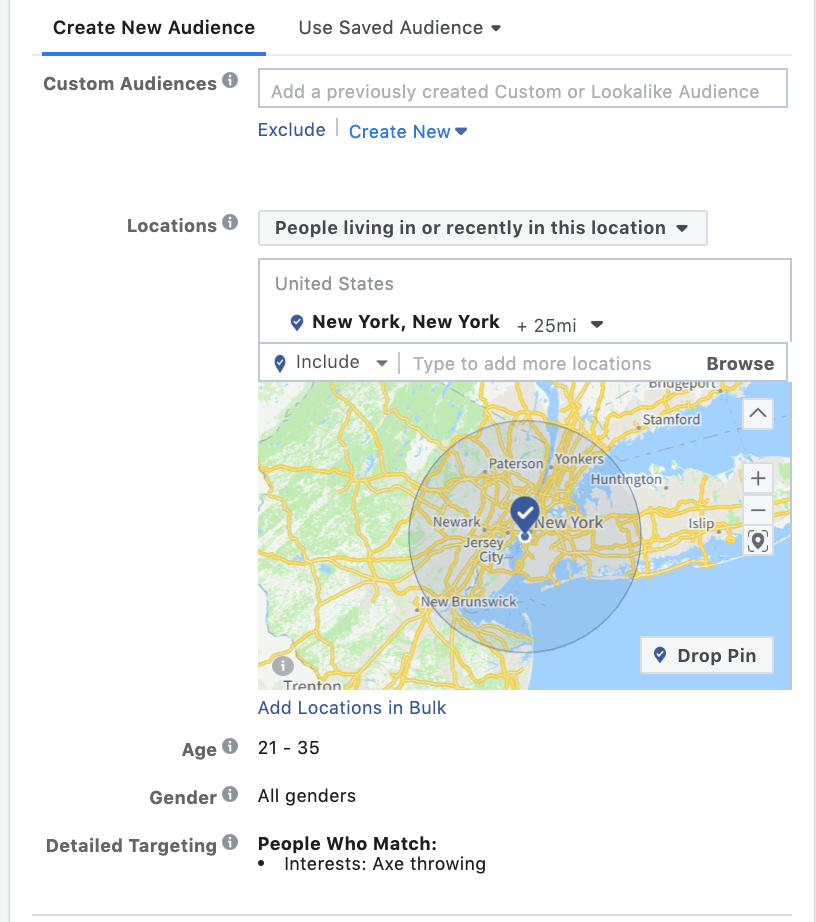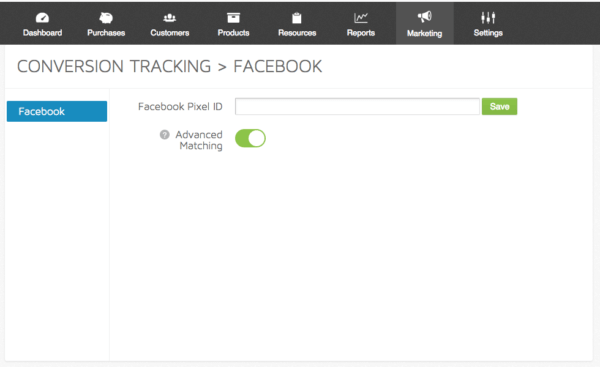
Facebook ads are a crucial part of any axe-throwing business marketing plan. It is one of the most effective ways to get more bookings and fill up bays.
Where Google Ads are all about bidding on specific keywords, Facebook and Instagram ads allow you to place ads based on demographics and interests. This can allow you to get brand awareness (and sales) from niche groups.
The three biggest success factors of paid social campaigns are:
- Initial setup
- Your targeting research and strategy
- Ability to manage campaigns
In this post, we’ll share a guide for how to set up, manage, and run profitable ad campaigns for your axe-throwing business.
How to get started with Facebook Ads
Facebook Ads Manager is an all-in-one tool for creating, managing, and tracking ad campaign performance across the Facebook, Messenger, Whatsapp, and Instagram ecosystem. It includes a guided campaign creation tool, which you will use to set up a new ad campaign.

Campaigns
The top level of the structure of a Facebook Ads campaign is the campaign itself. This is where you set your campaign objective. Some examples of objectives are conversions, traffic, and brand awareness.
Pro Tip: You can only choose one objective for each campaign. We recommend starting with either conversions – which would be new bookings- or traffic – new visitors to your site – at the start.
Then, give your initial campaign a descriptive name, using a format such as “Campaign Name – Date Created – Creative Descriptor.”
Ad Sets
The second level of the campaign structure is the ad set. Ad sets are how you tell Facebook whom you want to target for your campaign. If you have a limited budget and a sizable amount of traffic (more than a few thousand monthly visitors), we recommend starting with retargeting ads.
This is also where you can choose and adjust your ad schedule and budget.
Pro Tip: If you are brand new to Facebook ads, start slow and bid $5-10 per day max. Then as you start to see results, ramp up your ad budget from there.
For example, if you run an axe-throwing business in NYC, you can target anyone, who lives in NYC, is between 21 – 35, and lists “Axe-throwing” as an interest.

Ads
The third level of the campaign structure is the ad. This is where you’ll write your ad copy, upload videos, and images, add your call-to-action (CTA), which is typically a landing page on your site.
Pro Tip: We recommend adding UTM codes for each link so you can get a better view of which ad creatives are performing best.
Here is an example of a Facebook ad.

Creating your Facebook Ads strategy
Start with Facebook Retargeting Ads
Have you ever visited a clothing website, put some items in your cart (without buying anything), and then get distracted on Facebook? Suddenly, you are seeing ads for this clothing store in your newsfeed. This is an example of retargeting ads. It can be an effective way to get customers to buy from you.
You can do the same thing by retargeting visitors who visit your website but don’t make a booking. So, you can show them ads anytime they are on Facebook, Messenger, or Instagram.
Retarget website visitors
Retargeting ads work because it keeps your business top-of-mind with potential customers while they are still shopping around.
You can also use retargeting to capitalize on your website traffic by showing ads to Facebook users who have visited your website but have not made a booking.
However, before you run any retargeting ads, make sure you have the Facebook pixel correctly installed and that you share data on completed website transactions with Facebook so that you can track your return on ad spend.
The Facebook Pixel will help you target ads, measure performance, and calculate your return on advertising investment.
Pro Tip: Here’s how you can add and test the Facebook pixel in Ad Manager.
In addition, if you use Xola, you can simply add your Facebook Pixel ID to the Conversion Tracking section under the Marketing Tab to share booking value, listing ID, guest quantity, etc.

Create a custom audience based on your customers’ mailing addresses or emails
In addition to retargeting website visitors, you can also set up retargeting campaigns based on email addresses, phone numbers, and mailing addresses.
To do this, you can upload your information to Facebook and create a custom audience. This works particularly well with past customers.
Pro Tip: If you use Xola Waivers, SmartWaiver, or Wherewolf for digital waivers, you already have a built-in customer list. All you have to do is upload it to Facebook to get started.
Highlight photos and videos of your customers in ads
Set up a process for collecting photos and videos from your customers. Then use the best on social media, your website, and even ads in order to capture and engage your target audience.
Pro Tip: you can use a user-generated content app, such as Fotaflo, to streamline this process.
Pictures from guests are great for showcasing the experience you provide on Facebook and Instagram and generating engagement. Once their picture is up, encourage guests to tag themselves, share with friends, or simply join your social community.
Often, the highest performing ads that look like they were captured by someone in the moment on their smartphone.
You can take this a step further by incorporating additional social proof signals in your ads, like sharing testimonials in the copy.
Managing and optimizing ad campaigns
Create separate ad sets for each channel
One of the biggest mistakes is creating the same campaign to run on multiple channels like Facebook desktop, mobile Facebook, Messenger, and Instagram stories. You want to consider the channel and how people consume content through it.
For example, you can target visitors by
- Targeting a Custom Audience based on a customer file on Facebook desktop.
- Targeting a Custom Audience based on a customer file on Facebook mobile
- Targeting a Custom Audience based on a customer file on Instagram Stories
Optimize your website for bookings
When you are spending money on ads, you want to maximize the number of new bookings. Every page, headline, image, video, and call-to-action should be designed to persuade your target audience to make a booking.
In addition, the pages you are sending people to should load quickly across desktops, tablets, and smartphones, and be relevant to the ad copy.
Pro Tip: Check out this post with tips for how to optimize your checkout process.
Don’t set it and forget it
When your advertising start date arrives, your new campaigns, ad sets, and ads should all go live as planned. It is best to let the campaign run for about 48 hours and then check on it.
At this point, you’ll want to look at the initial results, make sure you have implemented your Facebook Pixel correctly, and that your booking software is sharing booking information with Facebook. This will allow you to assess performance by the booking revenue that results from your campaigns, rather than by vanity metrics such as reach and engagement.
It is recommended that you continue to check and optimize your campaigns at least once a week. You’ll want to pay attention to metrics like traffic, conversions, new revenue, ad frequency, etc.
Pro Tip: Ad frequency is particularly important if you are running retargeting ads to a smaller audience (anything less than a few thousand people) as ad fatigue can quickly set in. You’ll want to change up your ad creative once the frequency is above “5.”
Conclusion
In sum, we covered how to set up Facebook advertising campaigns to attract new and repeat axe-throwing business. The most underrated part of any successful campaign is the targeting strategy. This means understanding who your ideal customer is and the type of content they like to consume. In addition, make sure you have all of the campaign fundamentals set up properly, like the Facebook pixel and conversion tracking.




